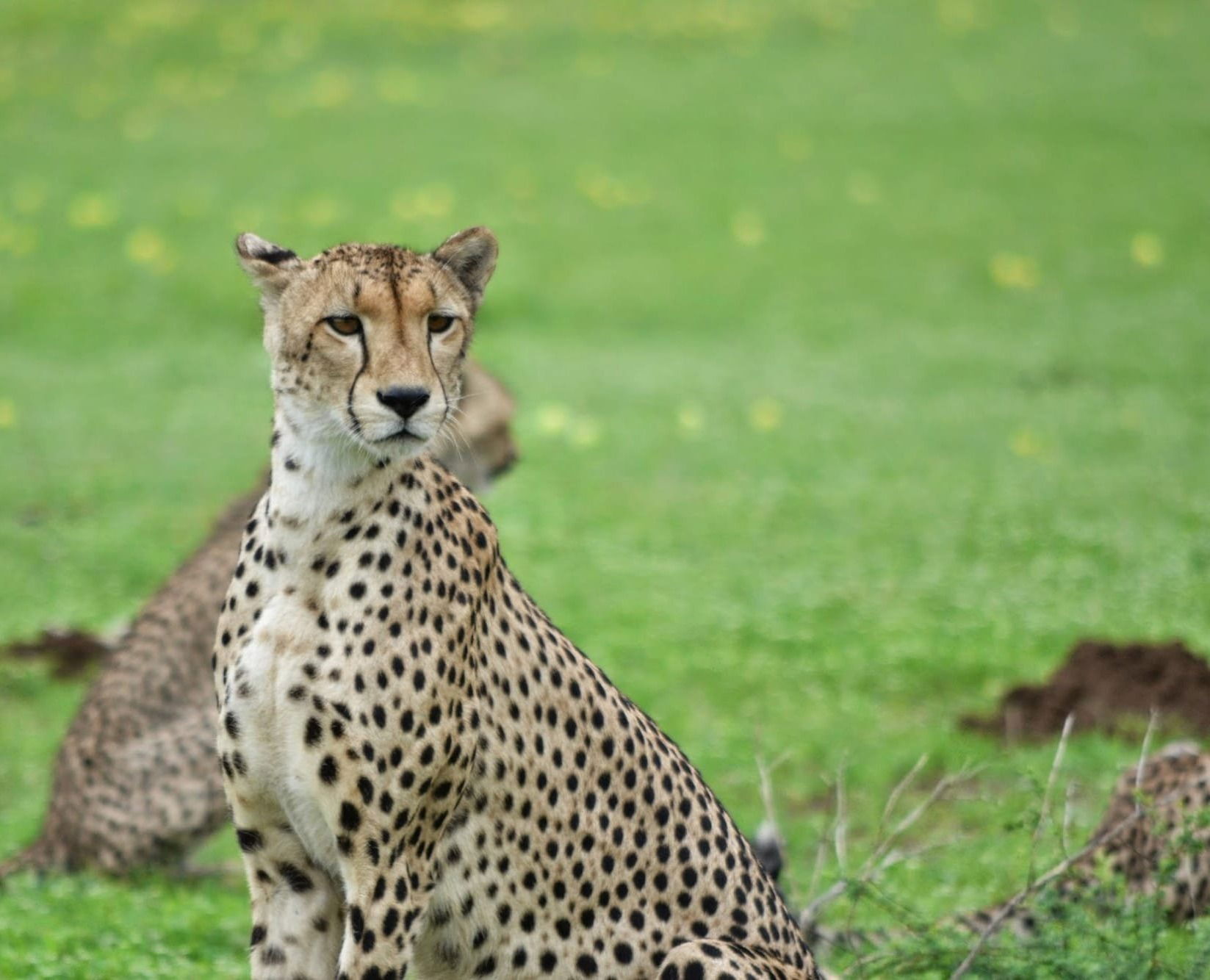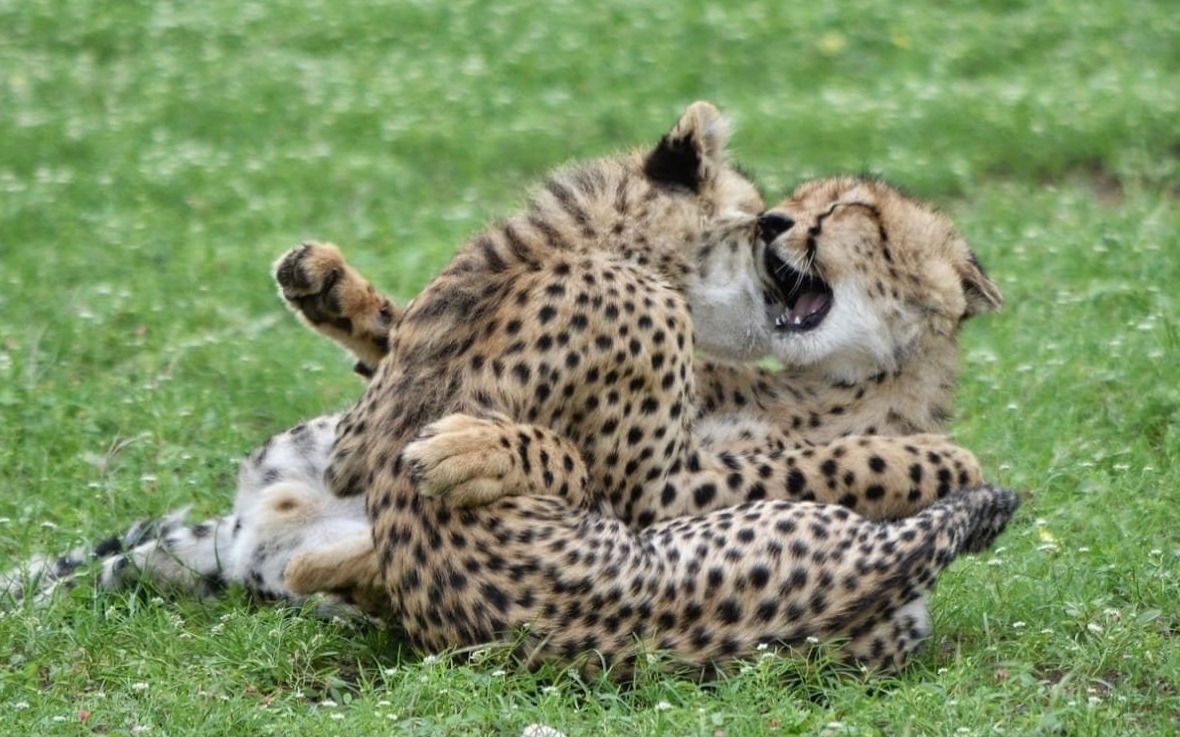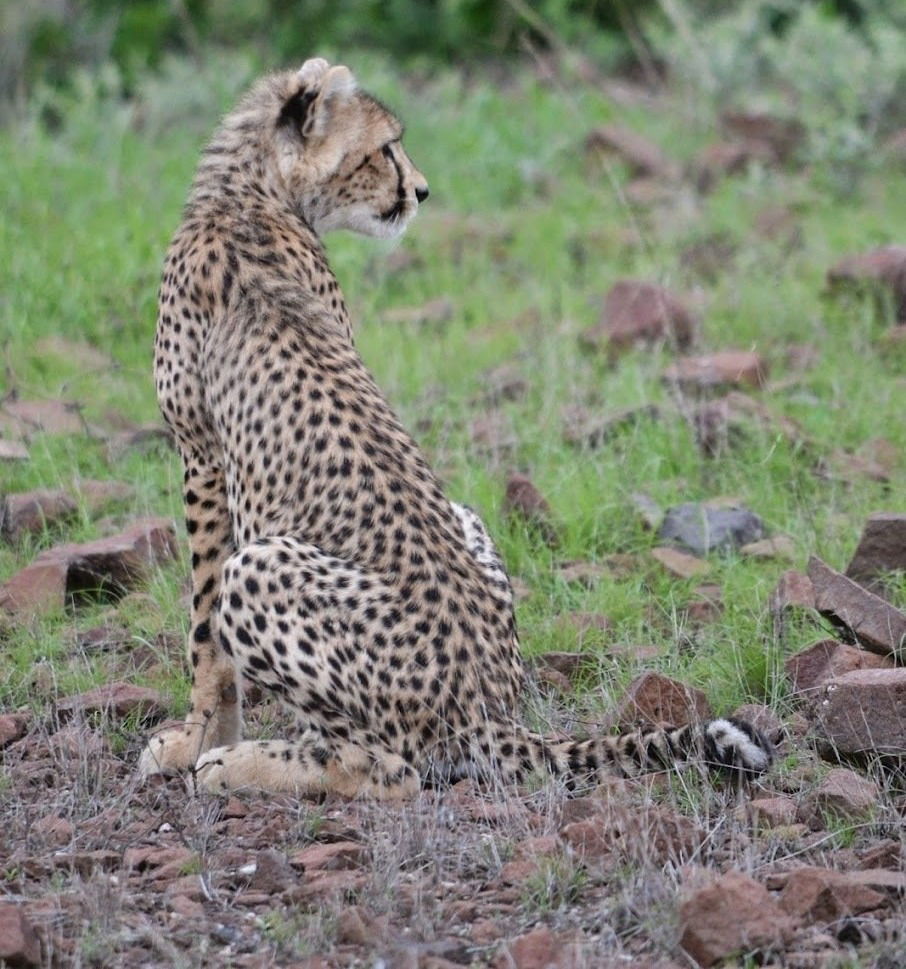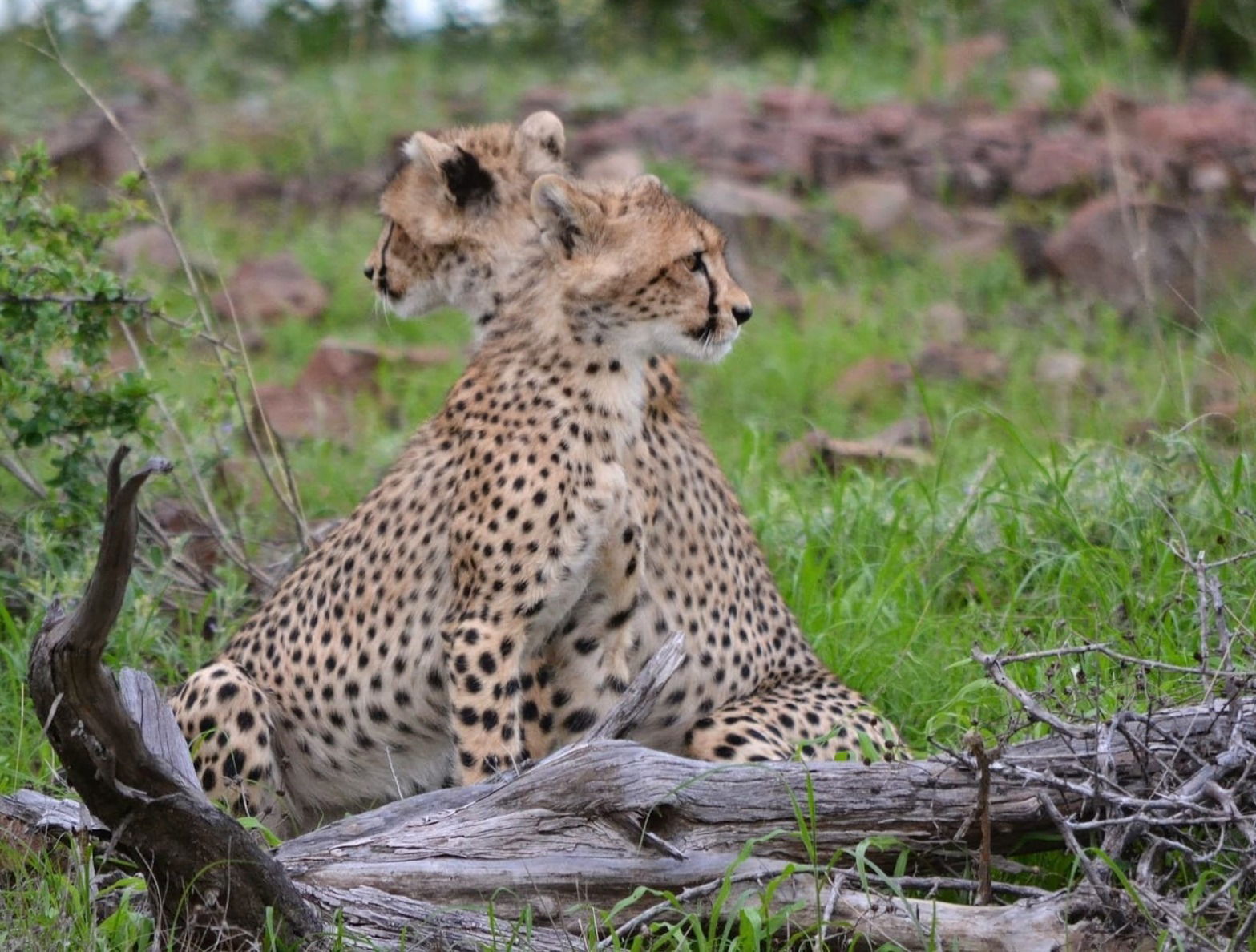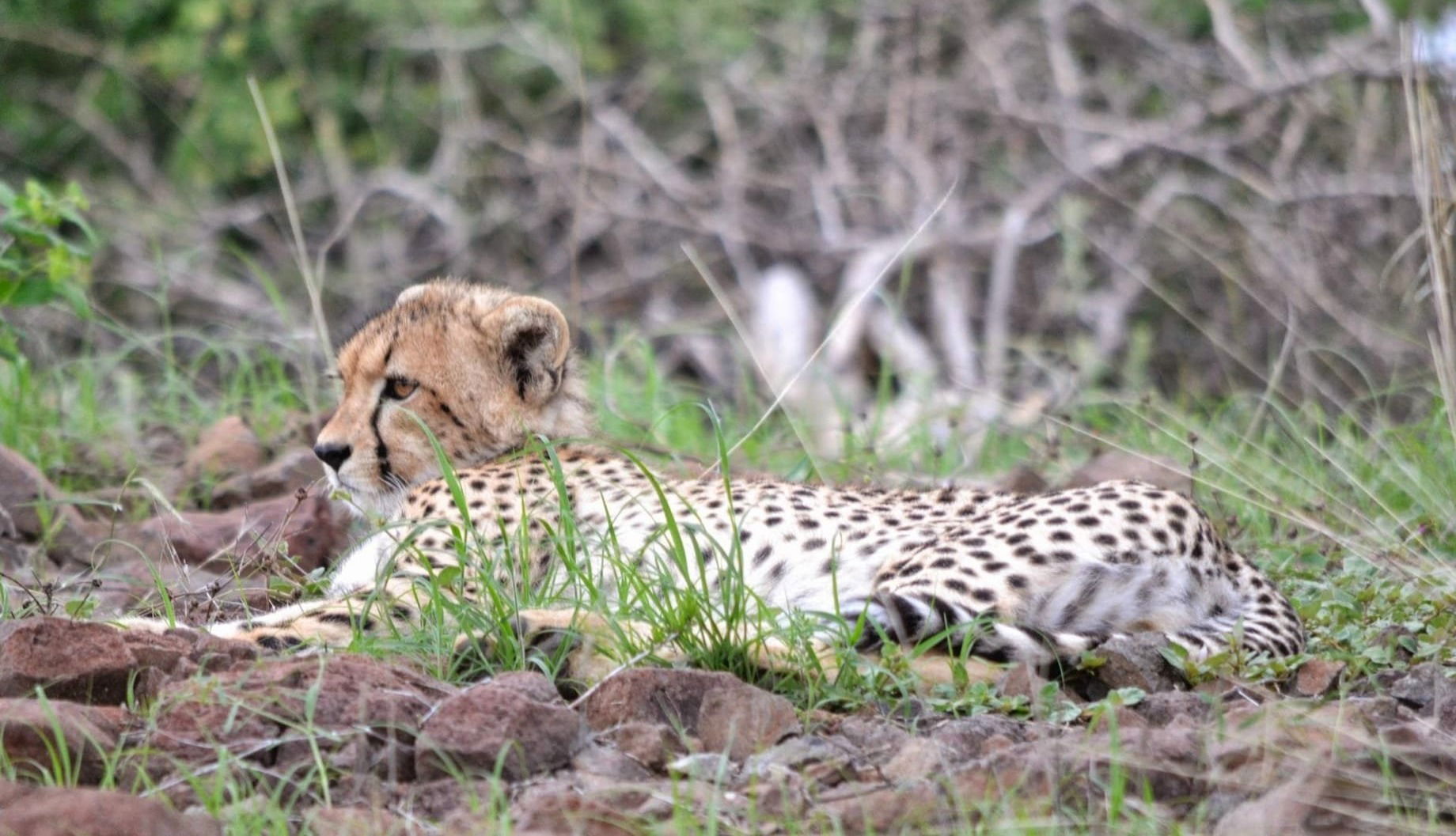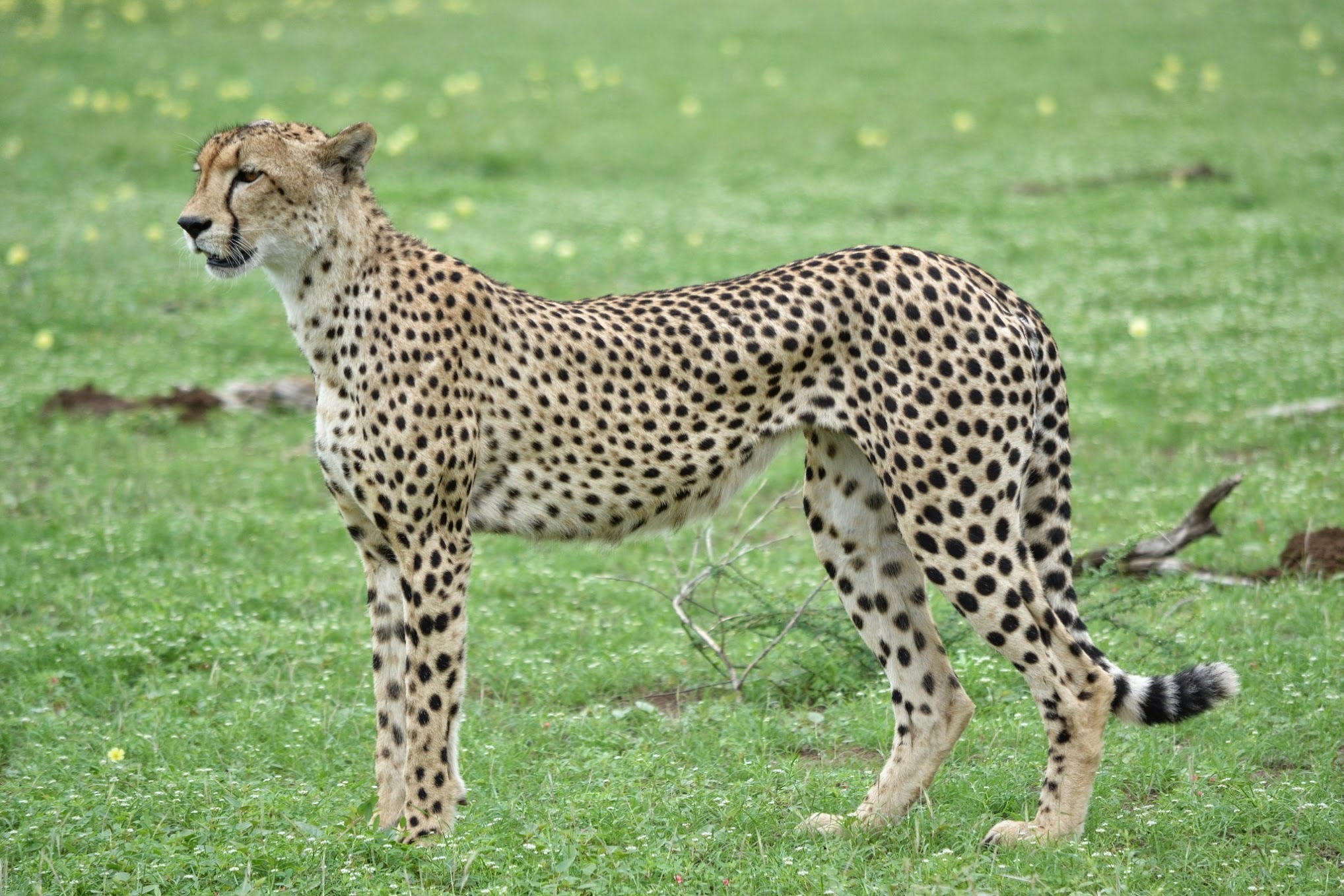Africa: Cheetah Chronicles—Tales of Speed, Survival, and Family Bonds in the Wild!
Hey there, fellow adventure enthusiasts!
After our deep dive into the secretive world of leopards, let's uncover the thrilling tales of the solitary cheetahs – the speed demons of the wild!
The big difference between a cheetah and a leopard? The cheetah has spots, and the leopard has rosettes. A cheetah's spot is one big, black dot all alone. It doesn't connect to other spots. But a leopard's got smaller spots that bunch up in circles, making what they call rosettes. Cheetahs are slender and built for speed; leopards are solid and muscular. Leopards have big front paws to carry their heavy heads and lift prey. Cheetahs have large back paws for super-fast running.Cheetahs have “tear tracks.” Look out for those distinctive black "tear tracks" from the eyes to the mouth – they might be the cheetah's stylish anti-glare accessory for daytime hunting!
Cheetah's need open spaces. These solitary nomads never stay in one place long. Their territory covers a large area. At times, the living areas of cheetahs and leopards may coincide, but although their habitats intersect, specific places are better suited for one species than the other. Cheetahs opt for open spaces to unleash their rapid sprints. They avoid larger cats and require plenty of room for safe dashes. In contrast, leopards, relying on stealth for hunting rather than speed, prefer areas with dense cover where they can easily conceal themselves.
Sometimes, you will find male cheetah coalitions; most of the time, these siblings tolerate each other and hunt together. You will see them displaying physical contact, grooming and playing; the unrelated males typically are solely explorers and do not belong to coalitions. After mating, a male might over-welcome his stay and be around the female longer.
These impressive carnivores are forced to look for food instinctively. With less and less of their usual prey around and humans taking over their land, finding food is getting tough for them. Because of this, they end up going after farm animals like cows and sheep. This leads to conflict that contributes to the cheetah's declining existence.
With an athletic build, long legs, a deep chest, slim necks supporting a small head, and a flexible spine, the cheetah is Mother Nature's masterpiece designed for speed. Its feet come equipped with special pads for traction and fun fact – it's the only cat species unable to retract its claws, a feature that helps maintain traction during high-speed pursuits. Let's not forget the cheetah's impressive stats – five subspecies, a maximum recorded lifespan of 14 years and five months for females, and around ten years for males. Sized at 1 to 1.5 meters in length and standing at 76 centimetres at the shoulder, cheetahs are the epitome of remarkable and awe-inspiring creatures in the wild! They usually prey on small antelopes such as Thomson’s gazelles and impalas but also hunt small mammals and birds. Now, let's dive into the action-packed scenes of a cheetah's mealtime.
Picture this: our cool cat gets up close and personal with its prey, then zooms off like a rocket at speeds reaching a mind-blowing 95 to 120 km/h (60-75 mph). That's faster than your Wi-Fi on a good day, folks! In the thrilling climax, our speedster knocks its prey down with a powerful paw and seals the deal with a quick neck bite. Sadly, though, the cheetah's turbo mode can't last for more than a short sprint before it's panting like it just ran a marathon. Yep, you guessed it – most of the time, these high-speed hunts end up being epic fails. And here comes the twist in the plot! After a successful meal, our cheetah friend must keep a watchful eye. Lions, leopards, hyenas, vultures, and jackals are like the snack-stealing villains of the wild, eyeing the cheetah's grub. So cheetahs are significant, but in the African animal group, they're middle-ranking players, not the top ones. Lions and spotted hyenas are like the big bosses. They sometimes snatch the cheetahs' food!
Now, when it comes to eating, it's different for boy cheetahs and single-girl cheetahs. They try to eat fast and pay little attention to what's happening around them. Males might accompany a female for a short while after mating, But, if a cheetah is a mom with babies, she's got a different plan. She watches out a lot, making sure no danger is coming. Moms want to keep their cubs safe while they all eat. It might take longer, but protecting the little ones is essential. Mothers spend a long time teaching their young how to hunt. Small, live antelopes are brought back to cheetah cubs so they can learn to chase and catch them. Moms are like superhero cheetahs! So, while our cheetah buddies may be lightning-fast, they've got their fair share of challenges in the wild.
Nature's a wild place– keep on adventuring!
